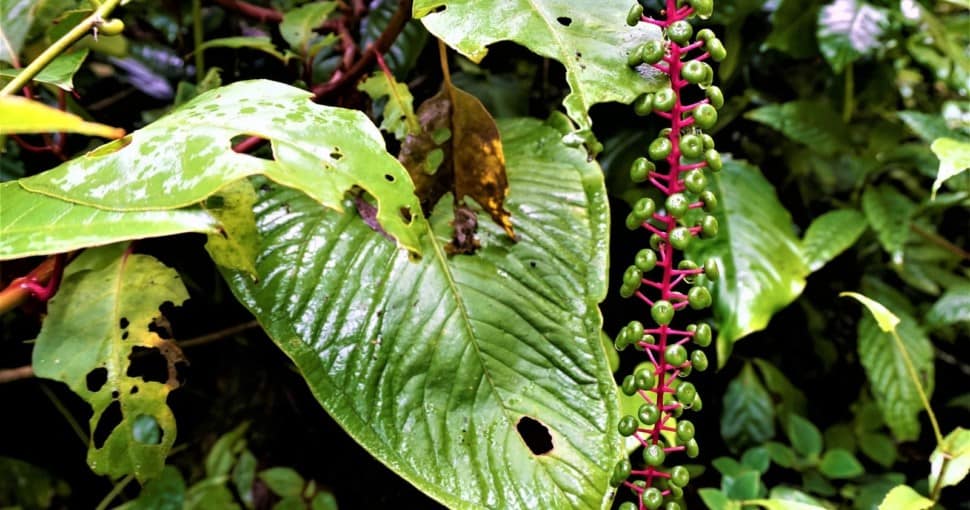Pokeweed is one of those plants that definitely has two sides to the coin. It is toxic for people and animals but produces berries that are useful as a dye for clothes and a colorant for wine. Some people even use cooked young pokeweed as medicine, but there is no evidence to show it is beneficial.
Contents
Pokeweed (Phytolacca americana) belongs to the family Phytolaccaceae. It is native to North America but has become naturalized on other continents. In some countries, it is declared an alien invasive species due to its toxicity and invasion of grazing fields and grasslands.
It is known by several other names; American pokeweed, dragon berries, inkberry, and poke sallet. It is a herbaceous perennial with a sharp, unpleasant fragrance. Pokeweed grows four to ten feet tall with green, red, or purple stems.
Pokeweed has simple green leaves, which are densely arranged around the stem. It has a large white taproot which makes mature plants difficult to uproot. The root has a particularly strong smell.
Pokeweed produces white or green flower spikes or racemes. The flowers have no petals and give rise to purplish-black berries. The berries have high levels of anthocyanin and are useful as a dye. Birds are attracted to the berries and are unaffected by the toxins.
Related: Are Poke Berries Poisonous?
Poke weed is toxic and cannot be eaten raw. Immature stems and leaves can be boiled and eaten. As the plant matures, the toxins become more concentrated and should not be consumed. It is, therefore, important to correctly identify pokeweed.
The following plants have some similarities to pokeweed:
- Elderberry
- Giant ragweed
- Invasive knotweed
- Rhubarb plants
- Castor bean plants
- Himalayan balsam
- Pigweed
- Blackberries
1. Elderberry
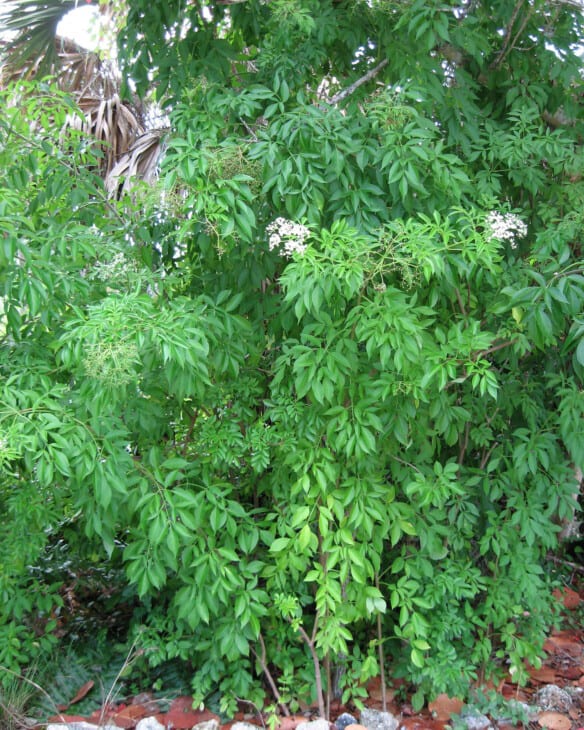
Elderberry is also known as Sambucus or elderflower. It is part of the Adoxaceae plant family, and its botanical name is Sambucus nigra. It is native to warmer regions of Europe, North Africa, and Asia.
Elderberries grow on black elder trees, which are deciduous perennial shrubs or small trees. They grow ten to fifteen feet tall and up to thirty feet wide. There are usually multiple stems that are initially green and become brownish-grey as the plant matures.
Black elders have green leaves with serrated edges. They produce clusters of strongly scented small white flowers. As the flowers die, they give rise to shiny black elderberries popular with birds.
Black elders are fast-growing shrubs and can quickly fill spaces in a garden.
Related: 11 Plants That Look Like Elderberry
2. Giant Ragweed
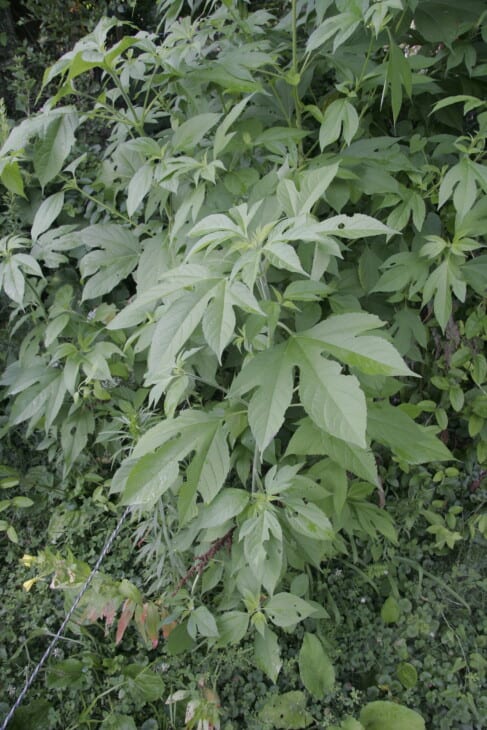
The giant ragweed (Ambrosia trifida) belongs to the family Asteraceae. They have many other names, such as great ragweed, buffalo ragweed, horseweed, and kinghead. It is found growing indigenously in North America.
This annual shrub, like pokeweed, grows quite large, up to seven feet tall. The leaves are arranged on opposite sides of the stem and are often serrated. It has larger leaves than pokeweed, with the leaves being ten inches long and up to eight inches wide.
Like pokeweed, the flowers grow on a raceme and form fruit when they die off. The resulting burr is very similar to pokeweed.
3. Invasive Knotweed
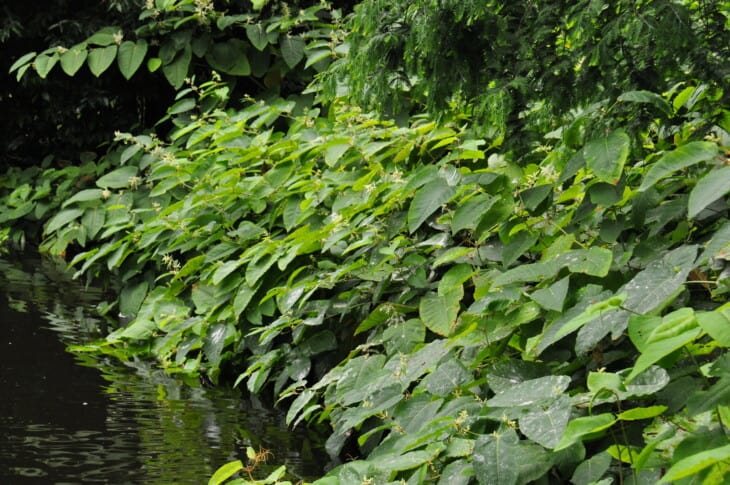
Invasive knotweed (Renoutria japonica) is also known as Japanese knotweed. It belongs to the Polygonaceae family.
The hollow stems grow rapidly to ten to thirteen feet. Young knotweeds are very similar to pokeweed as they grow on disturbed land and through cracks in the pavement. The stems often have red or purplish rings or splotches that make them similar to pokeweed.
The simple leaves are shaped like a broad oval and grow on alternate sides of the stem in a zigzag pattern. They produce small white flowers on a raceme late in summer. Older knotweeds do not resemble pokeweed, but young plants are very similar.
4. Rhubarb Plants
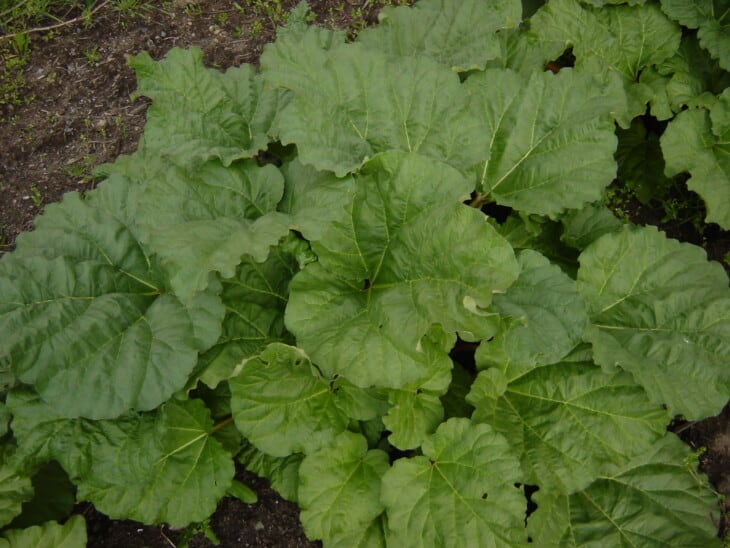
Rhubarb plants (Rheum x hybridum) belong to the family Polygonaceae. No one is quite sure of the origins of rhubarb, but it is cultivated in most countries.
Rhubarb stems look very much like pokeweed. They are initially green, but they turn red as the plant matures. The red stems are very similar to pokeweed. Pokeweed has smaller leaves than rhubarb, whose leaves look more like spinach.
5. Castor Bean Plant
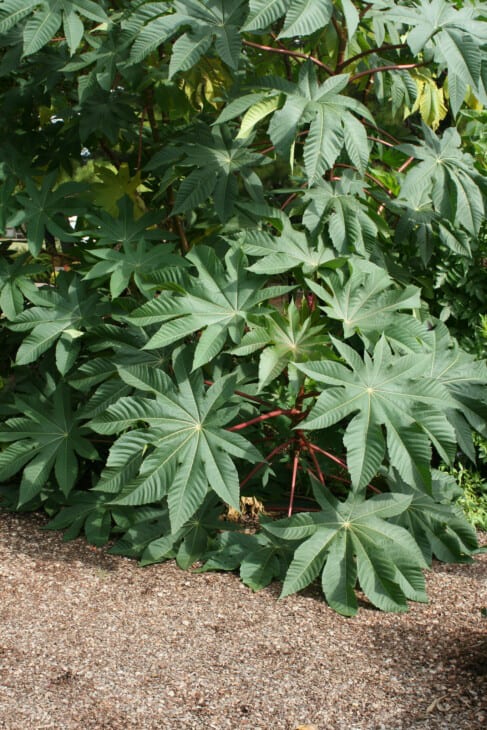
Castor bean plants (Ricinus communis) are part of the Euphorbia family of plants. They grow indigenously in the tropical areas of east Africa and Ethiopia but have naturalized in many countries worldwide.
Castor bean plants grow as large, evergreen shrubs in moist, well-drained soils. They often grow in disturbed soil, just as pokeweed does.
Castor beans may grow in the same area as pokeberries and could be confused. Castor bean plants have red stems like pokeweed, but their leaves are quite different. Pokeweeds have simple leaves, and castor bean plants have star-shaped leaves that can grow to more than two feet in size.
Castor bean plants produce red flowers on a raceme similar to pokeweed. The flowers also lack petals, just like pokeweed. Where pokeweed flowers give rise to berries, castor bean flowers form round spiked seed pods.
Castor bean plants grow in full sunlight and require liberal water. It does not cope well with frost or temperatures below freezing. Drought causes the plant to wilt.
6. Himalayan Balsam
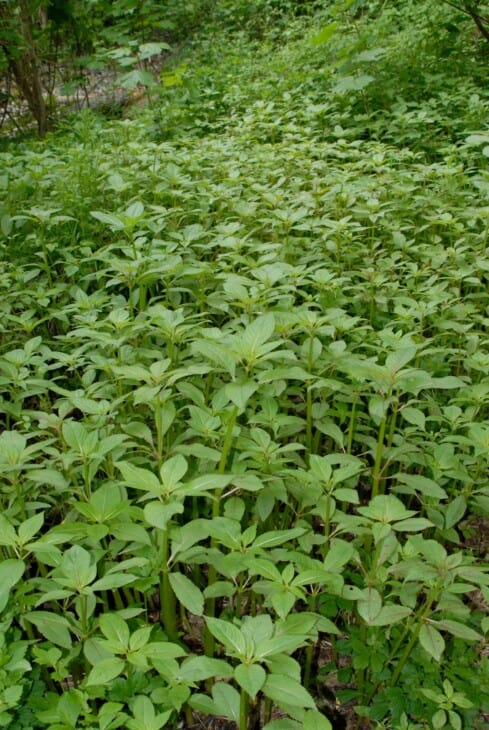
If you want to include a red-stemmed plant without the toxicity of pokeweed, then a good choice is Himalayan balsam. It is also known as Impatiens grandulifera, ornamental jewelweed, or kiss-me-on-the-mountain.
Like pokeweed, Himalayan balsam has a greenish-red stem and can grow to six feet tall. Although pokeweed has reddish pink flowers like Himalayan balsam, the shape is very different. Himalayan balsam produces flowers with two large petals, but pokeweed produces flowers that have no petals.
Himalayan balsam does not cope well with drought or frost but tolerates most other environmental conditions. They like damp, fertile soil.
Unfortunately, Himalayan balsam is an invasive alien in some countries, so it is important to check the status in your local area before planting it.
7. Pigweed
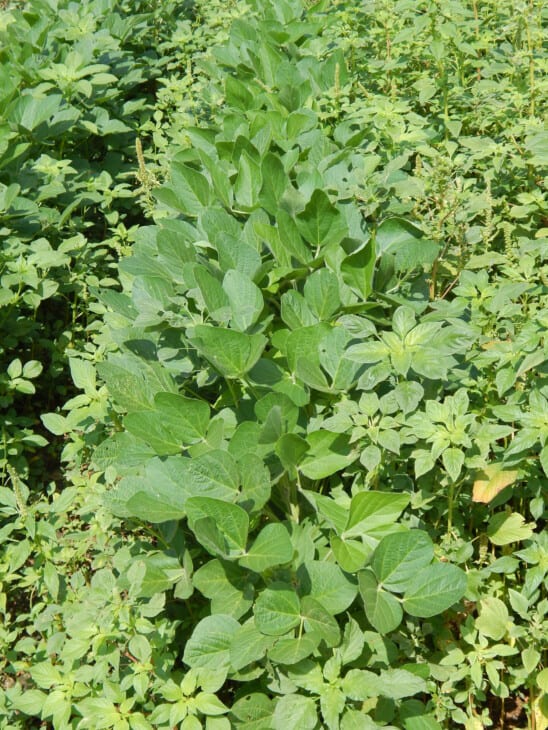
Pigweed, also called Amaranthus, grows as a ground cover or a shrub that can reach eight feet tall. The green stem is fleshy and resembles a succulent. Pigweed leaves are arranged alternately on the stem and often have a notch at the end.
Pigweed produces green or pink-red flower spikes. Like pigweed, the flowers have no petals. The male and female pigweed flowers are found on the same raceme. They produce abundant blackberries similar to pokeweed.
Pigweed has a red tap root, and the red blush extends part way up the stem, making them similar to the appearance of pokeweed. Waterhemp pigweed is even more like pokeweed, as the stems have red and green stripes.
Some pigweed species have red underside surfaces of the leaves and can be distinguished from pokeweed by this characteristic.
Pigweed is not toxic, and the berries can be safely eaten raw. Any plant part can be consumed, although some species’ stems have spines that must be removed first.
8. Blackberry Plants
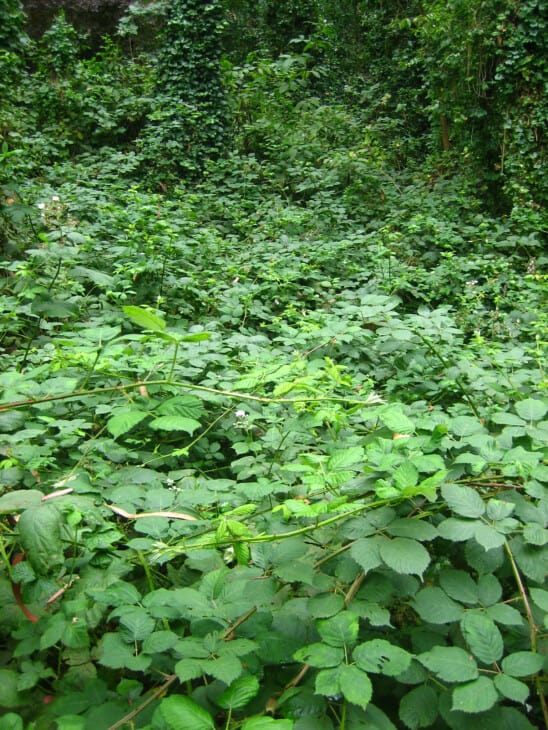
Blackberry (Rubus spp.) plants belong to the family Rosaceae. They are a good option for gardeners who wish to plant shrubs with blackberries similar to pokeberries. Blackberries are edible and non-toxic.
Related: 5 Plants That Look Like Blackberries
Like pokeweed, blackberries grow as dense shrubs or brambles that can reach eight feet tall. They have attractive bright green leaves that fill gaps in the garden to replace pokeweed.
Blackberries grow well in poor soil and are easy to grow. They produce white or pink flowers, which give rise to berries that are black and shiny.
Wild blackberries have unpleasant thorns that form an impenetrable tangle, but newer cultivars with no thorns have been developed. Modern cultivars are less invasive, making them more popular with gardeners.

